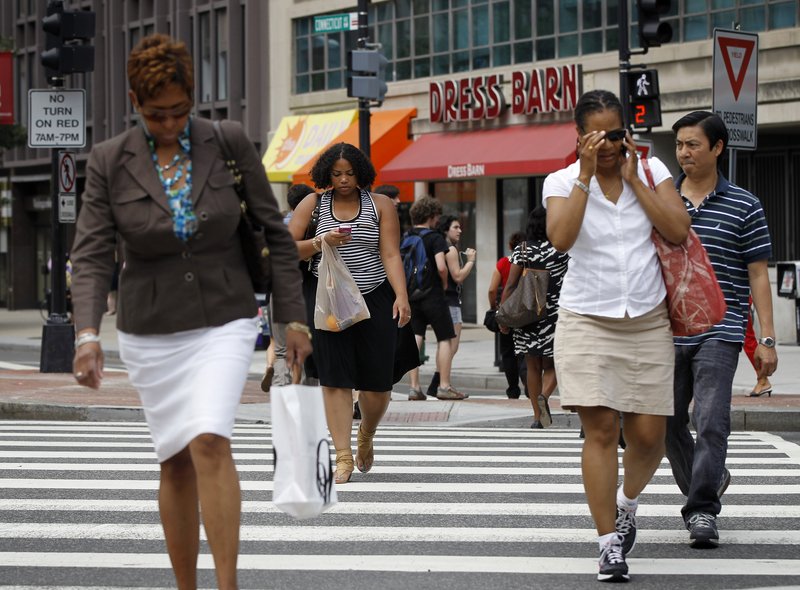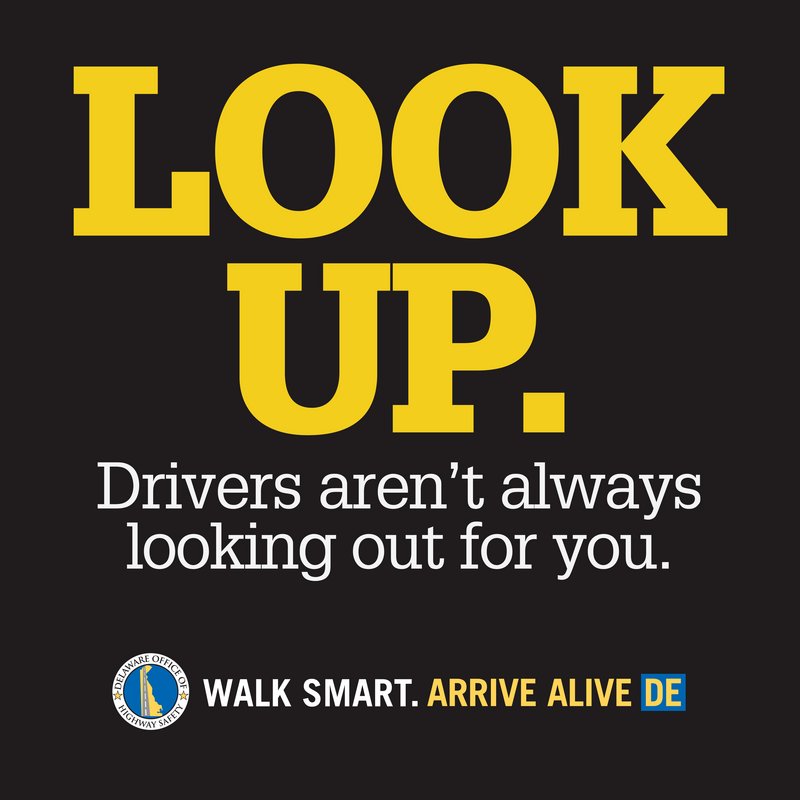WASHINGTON – A young man talking on a cellphone meanders along the edge of a lonely train platform at night. Suddenly he stumbles, loses his balance and pitches over the side, landing head first on the tracks.
Fortunately there were no trains approaching the Philadelphia-area station at that moment because it took the man several minutes to recover enough to climb out of danger. But the incident, captured last year by a security camera and provided to The Associated Press, underscores the risks of what government officials and safety experts say is a growing problem: distracted walking.
On city streets, in suburban parking lots and in shopping centers, there is usually someone strolling while talking on a phone, texting with his head down, listening to music or playing a video game. The problem isn’t as widely discussed as distracted driving, but the danger is real.
Reports of injuries to distracted walkers treated at hospital emergency rooms have more than quadrupled in the past seven years and are almost certainly under-reported. There has been a spike in pedestrians killed and injured in traffic accidents, but there is no reliable data on how many were distracted by electronics.
“We are where we were with cellphone use in cars 10 years or so ago. We knew it was a problem, but we didn’t have the data,” said Jonathan Akins, deputy executive director of the Governors Highway Safety Association, which represents state highway safety offices.
State and local officials are struggling to figure out how to respond, and in some cases asking how far government should go in trying to protect people from themselves.
In Delaware, highway safety officials opted for a public education campaign, placing decals on crosswalks and sidewalks at busy intersections urging pedestrians to “Look up. Drivers aren’t always looking out for you.”
Philadelphia officials are drafting a safety campaign that will be aimed in part at pedestrians who are looking at their devices instead of where they’re going. “One of the messages will certainly be ‘pick your head up’ — I want to say ‘nitwit,’ but I probably shouldn’t call them names,” said Rina Cutler, deputy mayor for transportation and public utilities.
As an April Fool’s Day joke with a serious message, Philadelphia officials taped off an “e-lane” for distracted pedestrians on a sidewalk outside downtown office buildings.
Some didn’t get that it was a joke.
“The sad part is we had people who, once they realized we were going to take the e-lane away, got mad because they thought it was really helpful to not have people get in their way while they were walking and texting,” Cutler said.
When the Utah Transit Authority adopted an ordinance barring pedestrians from using cellphones, headphones or other distracting electronic devices while crossing the tracks of its light rail system on the streets of Salt Lake City, subject to a $50 fine, the Legislature refused to make it a statewide law.
“Look, I get distracted all the time,” bristled Utah State Rep. Craig Frank, a Republican who opposed the proposal. “I have a smartphone, too. Walking on sidewalks, in stores and malls, and maybe in a crosswalk sometimes I’m using my cellphone. But I try to stay connected to my environment. I never thought the government needed to cite me for using my cellphone in a reasonable manner.”
Distracted-walking bills in the Arkansas, Illinois and New York legislatures also went nowhere.
The Southeastern Pennsylvania Transportation Authority, which provided the video of the man who fell onto the train tracks, has received reports from bus drivers and train engineers who say they nearly hit pedestrians who didn’t appear to hear them sound their horns because they were distracted by their electronic devices, said Jim Fox, the agency’s director of system safety and risk management.
He said there have been several cases of people hit and killed by the authority’s trains in which it appears they were wearing headphones or using cellphones while trespassing on tracks.
A University of Maryland study found 116 cases over six years in which pedestrians were killed or seriously injured while wearing headphones. In two-thirds of the cases the victims were men under age 30. Half the cases involved trains. In a third of the incidents, a warning horn was sounded just before the accident.
“With the smartphone technology these days and everything at your fingertips, it’s almost getting to be an obsession or a compulsion with people,” Fox said. “You see it in airports or train stations or malls — if there’s any kind of downtime, they’re jumping right to that phone.”
About 1,152 people were treated in hospital emergency rooms in the U.S. last year for injuries suffered while walking and using a cellphone or some other electronic device, according to the Consumer Product Safety Commission, which receives annual data from 100 emergency rooms.
But that’s likely an underestimate because patients may not mention they were using a cellphone or other device at the time at the time they were injured, or the doctor or nurse may neglect to include the information in his report, said Tom Schroeder, director of the commission’s data systems.
Send questions/comments to the editors.




Success. Please wait for the page to reload. If the page does not reload within 5 seconds, please refresh the page.
Enter your email and password to access comments.
Hi, to comment on stories you must . This profile is in addition to your subscription and website login.
Already have a commenting profile? .
Invalid username/password.
Please check your email to confirm and complete your registration.
Only subscribers are eligible to post comments. Please subscribe or login first for digital access. Here’s why.
Use the form below to reset your password. When you've submitted your account email, we will send an email with a reset code.